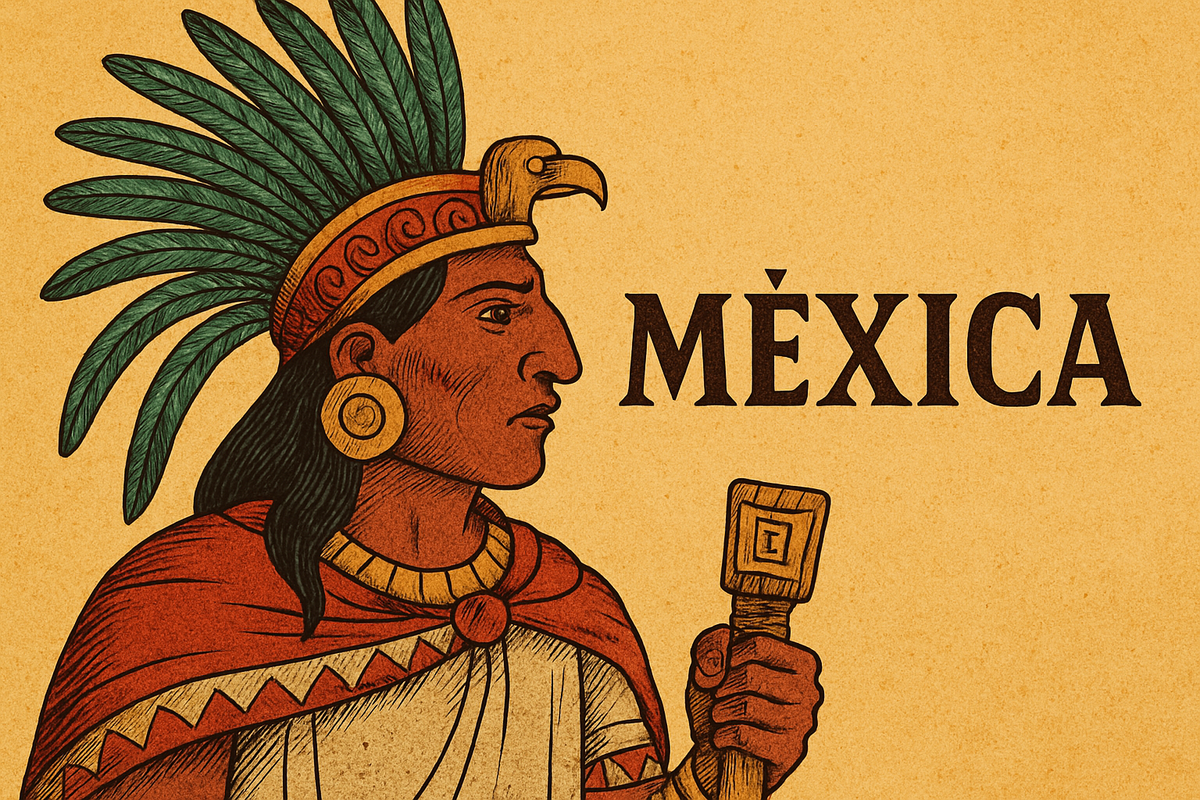Mexica, Not Aztec: The Real Name Behind the Empire That Built Mexico
he people at the heart of this empire never called themselves “Aztecs” at all. They were the Mexica — and their name still echoes in every corner of modern Mexico.-Rafael Benavente

by Rafael Benavente
From Mexica to México: The True Name of the Aztec Empire
When most people hear “Aztec Empire,” they imagine warriors in feathered headdresses, massive stone temples, and the mighty city of Tenochtitlan. But here’s the truth: the people at the heart of this empire never called themselves “Aztecs” at all. They were the Mexica — and their name still echoes in every corner of modern Mexico.
The Name They Chose for Themselves
The term Mexica was what this Nahuatl-speaking people called themselves. According to their own histories, they migrated from a legendary northern homeland called Aztlan, arriving in the Valley of Mexico in the 13th century. There, they founded their island capital, Mexico-Tenochtitlan, in 1325.
For the Mexica, the name was more than just a label — it was an identity tied to divine guidance, hard-won territory, and their role as the leading power in the region.
Why We Say “Aztec” Today
The word Aztec comes from Aztlan, but it wasn’t their own term. Early Spanish chroniclers and later European historians began using it to describe not just the Mexica, but other related peoples as well. Over time, “Aztec” became the convenient catch-all for the empire the Spaniards destroyed in 1521.
Historically speaking, calling them “Aztecs” is a bit like calling all Italians “Romans” — not wrong in spirit, but not what they actually called themselves.
The Triple Alliance and Mexica Dominance
The empire wasn’t just one city’s doing. It was a political partnership — the Triple Alliance — between Tenochtitlan (Mexica), Texcoco, and Tlacopan. But Tenochtitlan’s Mexica warriors, rulers, and tribute collectors quickly made them the dominant force. Outsiders began associating the entire empire with them, making Mexica the most important name of all.
From Mexica to México
When the Spanish took over, they kept the name “México” for the region surrounding the former capital. That name stuck, eventually becoming the name of the entire country. Today, every time someone says “Mexico,” they’re unknowingly honoring the Mexica — the real heart of what most people call the Aztec Empire.
Why It Matters
Understanding the difference between Aztec and Mexica isn’t just about historical accuracy — it’s about recognizing how the identities of the past still live in the present. Modern Mexico is a cultural heir to the Mexica in ways big and small, from place names and traditions to the Nahuatl words still used every day.
In short: the Mexica didn’t vanish in 1521. Their name, their influence, and their legacy are still very much alive — right there in the name of the nation.
By Rafael Benavente
